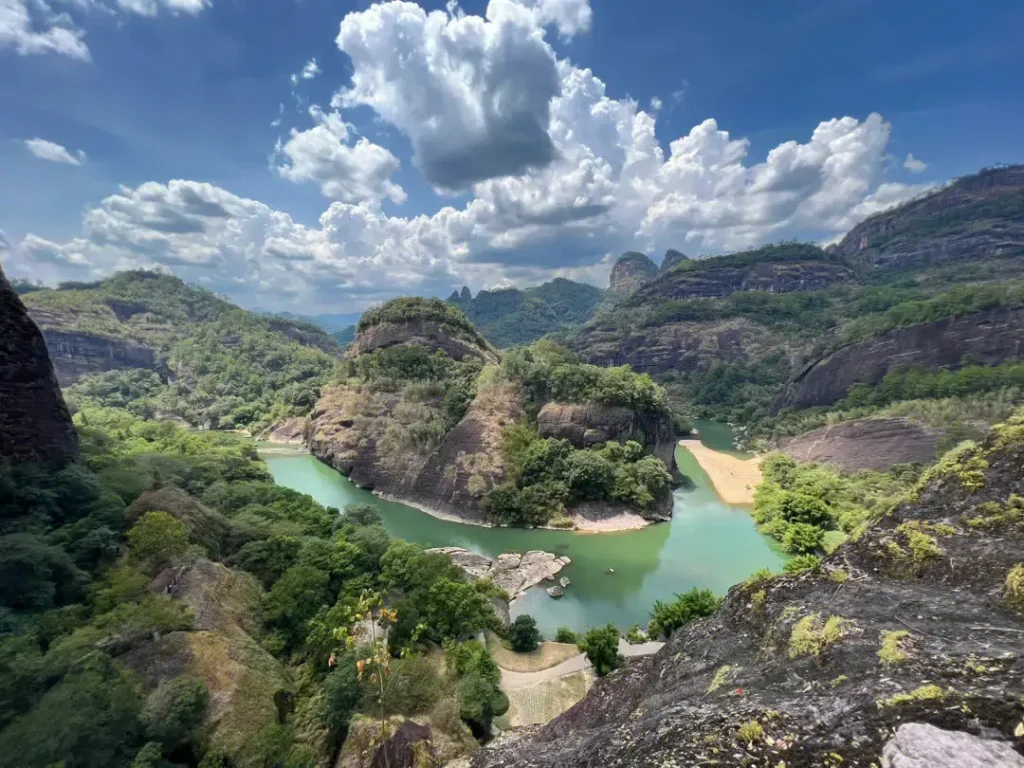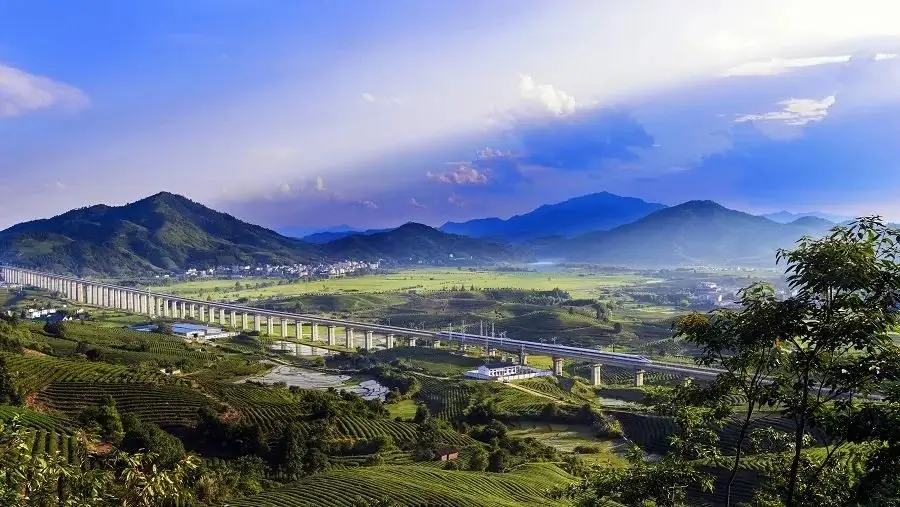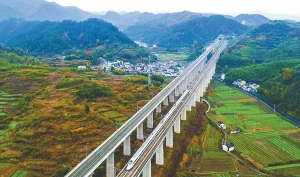 The Hefei-Fuzhou high-speed railway, which spans east China’s Anhui, Jiangxi provinces, and southeast China’s Fujian province, has been hailed as China’s “most beautiful” high-speed railway line. The 300km/h bullet train, which began operating in 2015, cuts through scenic sites across southeastern China, including three UNESCO World Heritage sites – Mount Huangshan, Mount Wuyi, and Mount Sanqingshan.
The Hefei-Fuzhou high-speed railway, which spans east China’s Anhui, Jiangxi provinces, and southeast China’s Fujian province, has been hailed as China’s “most beautiful” high-speed railway line. The 300km/h bullet train, which began operating in 2015, cuts through scenic sites across southeastern China, including three UNESCO World Heritage sites – Mount Huangshan, Mount Wuyi, and Mount Sanqingshan.
The railway line is an engineering marvel, with 85.8 percent of the track built on bridges or in tunnels. It has reduced travel time between Hefei and Fuzhou from eight hours to within four hours, making it a popular choice for tourists and business travelers alike.
In this article, we will take you on a journey along the Hefei-Fuzhou railway line, highlighting the stunning scenery and cultural attractions that can be seen along the way.
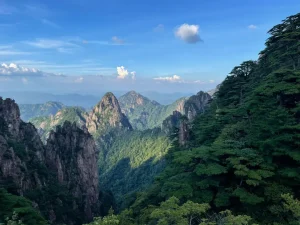 Mount Huang (黄山)
Mount Huang (黄山)
Located in eastern China’s Anhui Province, Mount Huangshan is a UNESCO World Heritage Site and one of China’s major tourist destinations. The mountain is renowned for its grotesque rock formations, dramatic pines, and seas of clouds, especially when the mountain peaks are covered with snow in winter. It is a frequent subject of traditional Chinese paintings and literature, as well as modern photography.
Wuyuan county (婺源县)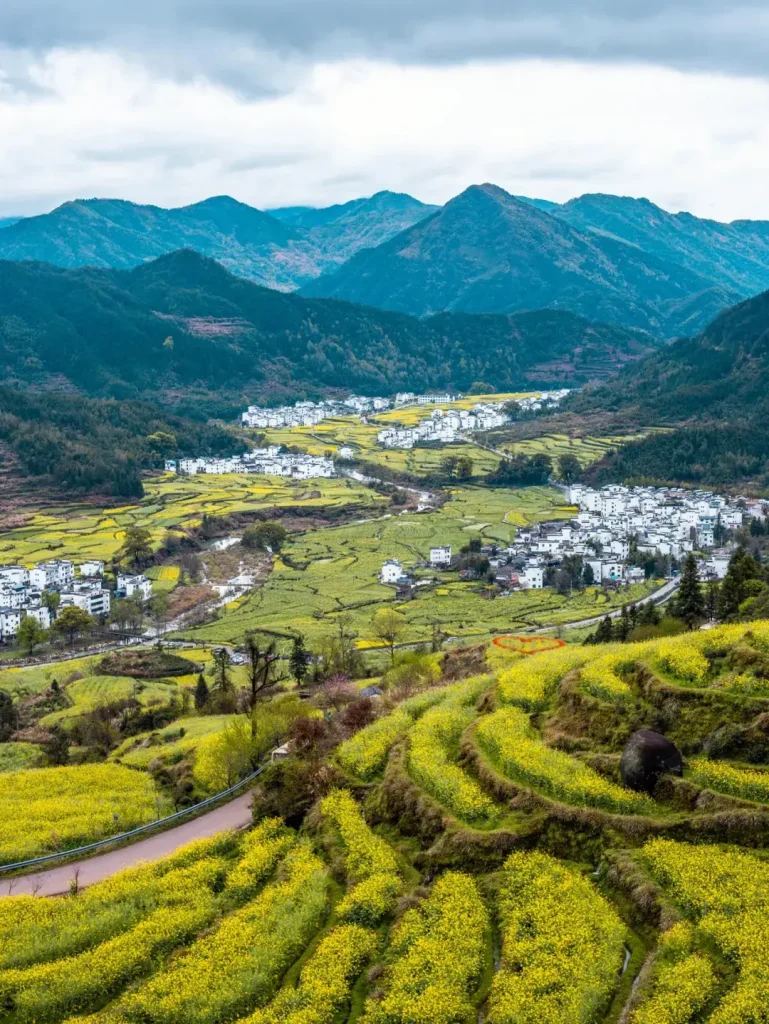
Hailed as one of the most beautiful villages in China, Wuyuan county in Jiangxi Province is a perfect option for canola field viewing in spring and attracts crowds of visitors across the country every April.
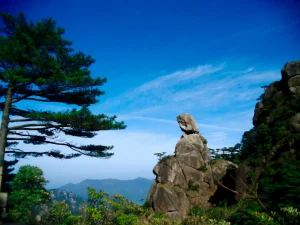 Mount Sanqingshan (三清山)
Mount Sanqingshan (三清山)
Also in Jiangxi Province, Mount Sanqingshan is famous for its picturesque scenery and rich culture of Taoism. It was included on the UNESCO world natural heritage list in 2008 for its “exceptional scenic quality, marked by the concentration of fantastically shaped pillars and peaks: 48 granite peaks and 89 granite pillars, many of which resemble human or animal silhouettes.”
Mount Wuyi (武夷山)
Standing in the suburbs of Wuyishan city, Fujian Province, Mount Wuyi entered UNESCO’s list of World Heritage Sites in 1999. It covers an area of over 630 square kilometers, and most of the hills are made of red sandstone, very steep but have flat tops. Numerous types of tea are produced around Mount Wuyi, and the most widely known is Dahongpao tea (a type of oolong tea).